The Learning Train
The Learning Train project is concerned with the provision of teaching material for people travelling on trains. As part of that project, there are interesting technical questions concerning how one could best communicate between a train and the track-side.
In order to answer that question, we have performed some experiments that show what can be achieved using 802.11b wireless ethernet (often dubbed "wifi"). We set up a static wifi node in a lay-by and drove a car, equipped with another wifi node, past it. The particular lay-by is on a fairly straight stretch of dual carriageway (so as to be similar to a railway line) on the A133 between Clingoe Hill near the University of Essex and Elmstead Market.
The static node was running a packet reflector; in other words, it simply returns each packet it receives to its sender. The mobile node was running software that sent a UDP packet to the static node, each packet containing a sequence number so that its round-trip time could be established.
The following series of experiments were performed:
- A drive-past at 30 mph using omni-directional antennae operating with diversity.
- A drive-past at 60 mph using omni-directional antennae operating with diversity (i.e., as 1 but at twice the speed).
- A drive-past at 60 mph using omni-directional antennae operating without diversity (i.e., as 1 but without diversity).
- A drive-past at 40 mph using directional antennae operating with diversity.
- A drive-past at 70 mph using directional antennae operating with diversity (i.e., as 4 but at a higher speed).
- Two drive-pasts at 70 mph and 60 mph using omni-directional antennae in ad hoc mode with diversity.
The day was dry but humid (rain was forecast for the afternoon). The temperature was roughly 21oC. The experiments were performed between 11:00 and 12:30.
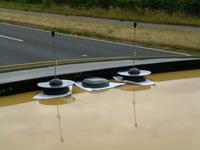
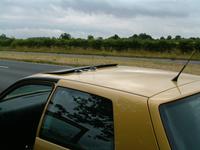
The omni-directional antennae attached to the car
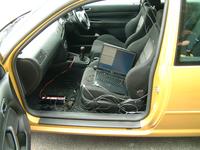
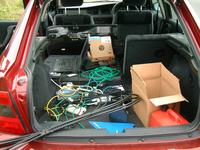
The equipment in the mobile (left) and static (right) nodes
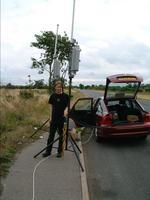 The antennae mounted on tripods. There are two sets of
antennae for the diversity experiments.
The antennae mounted on tripods. There are two sets of
antennae for the diversity experiments.
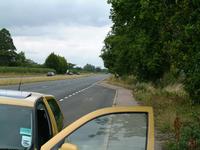
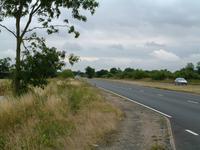
The directions of approach (left) and departure (right)
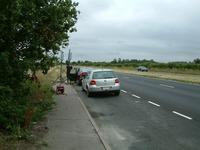
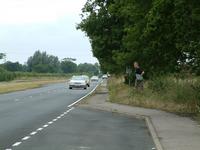
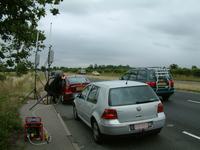
The experiments in action

